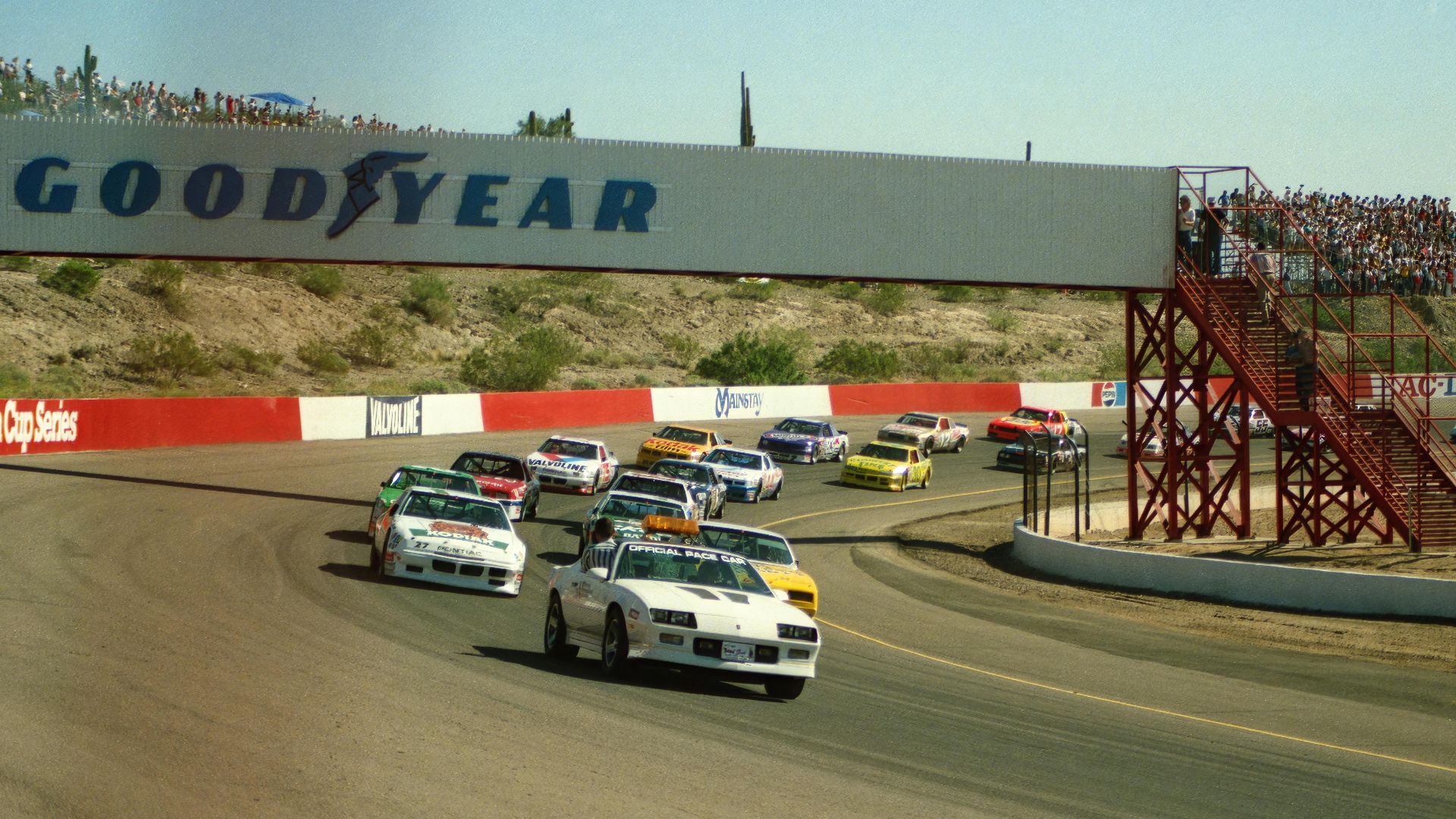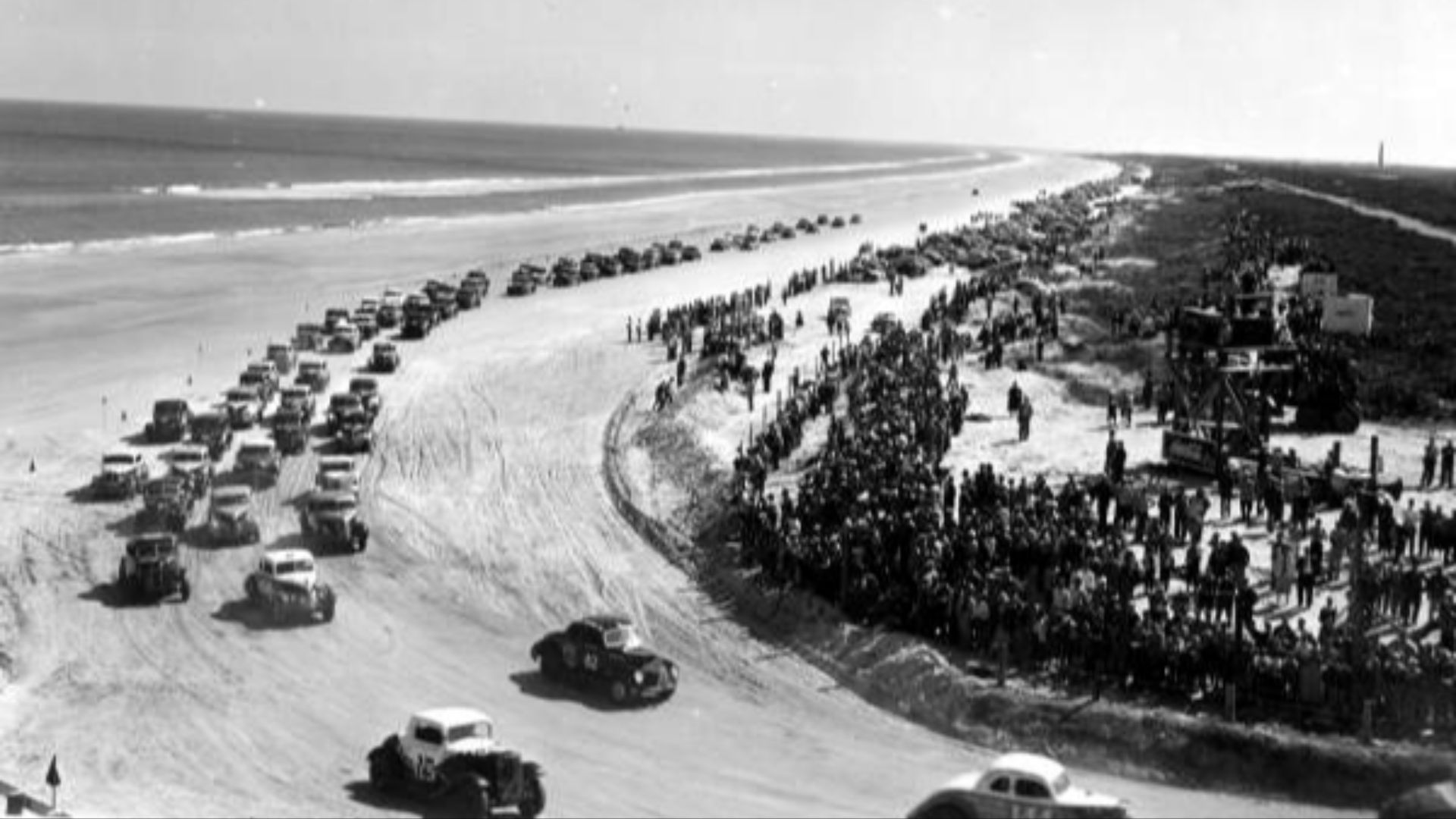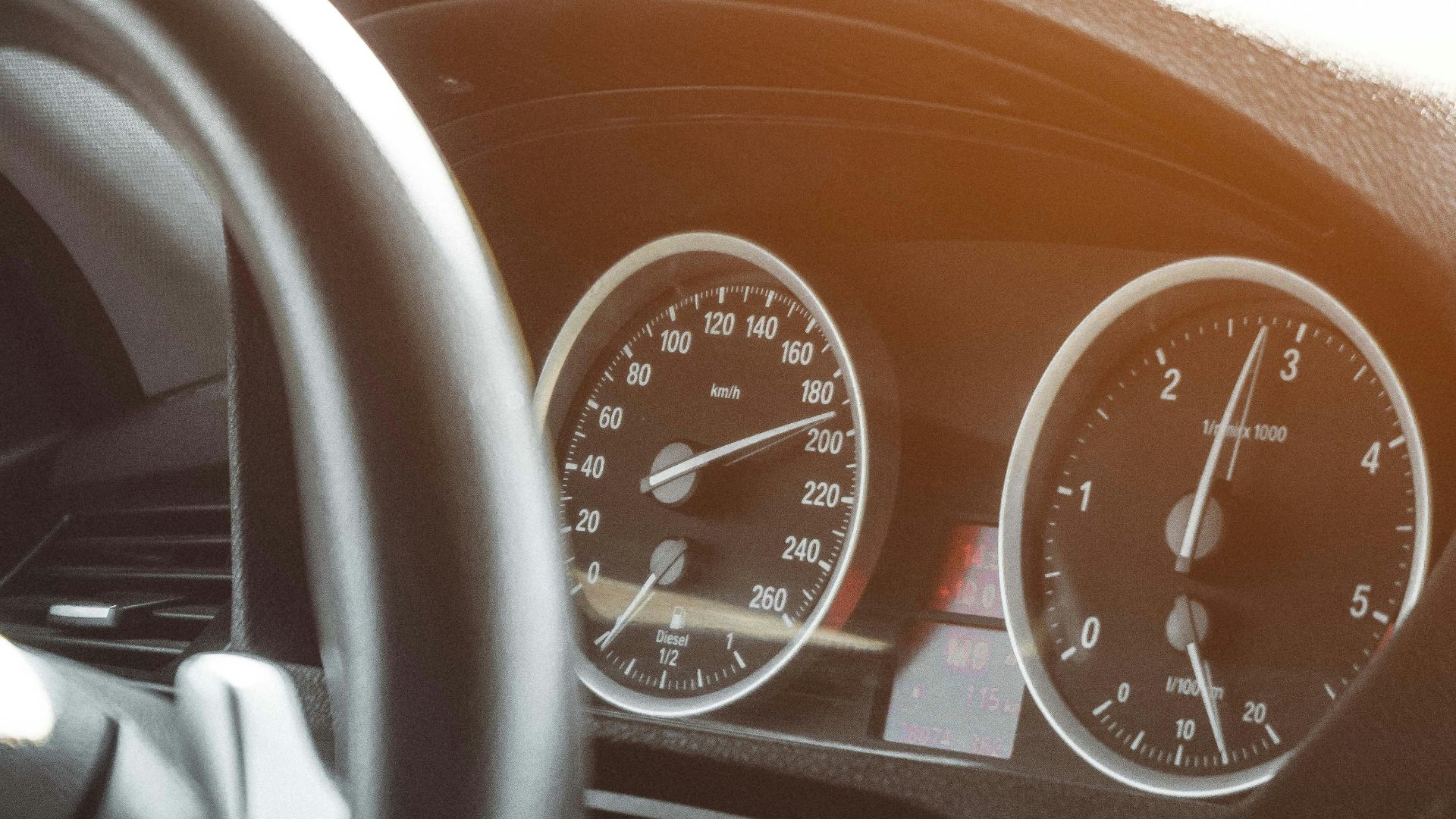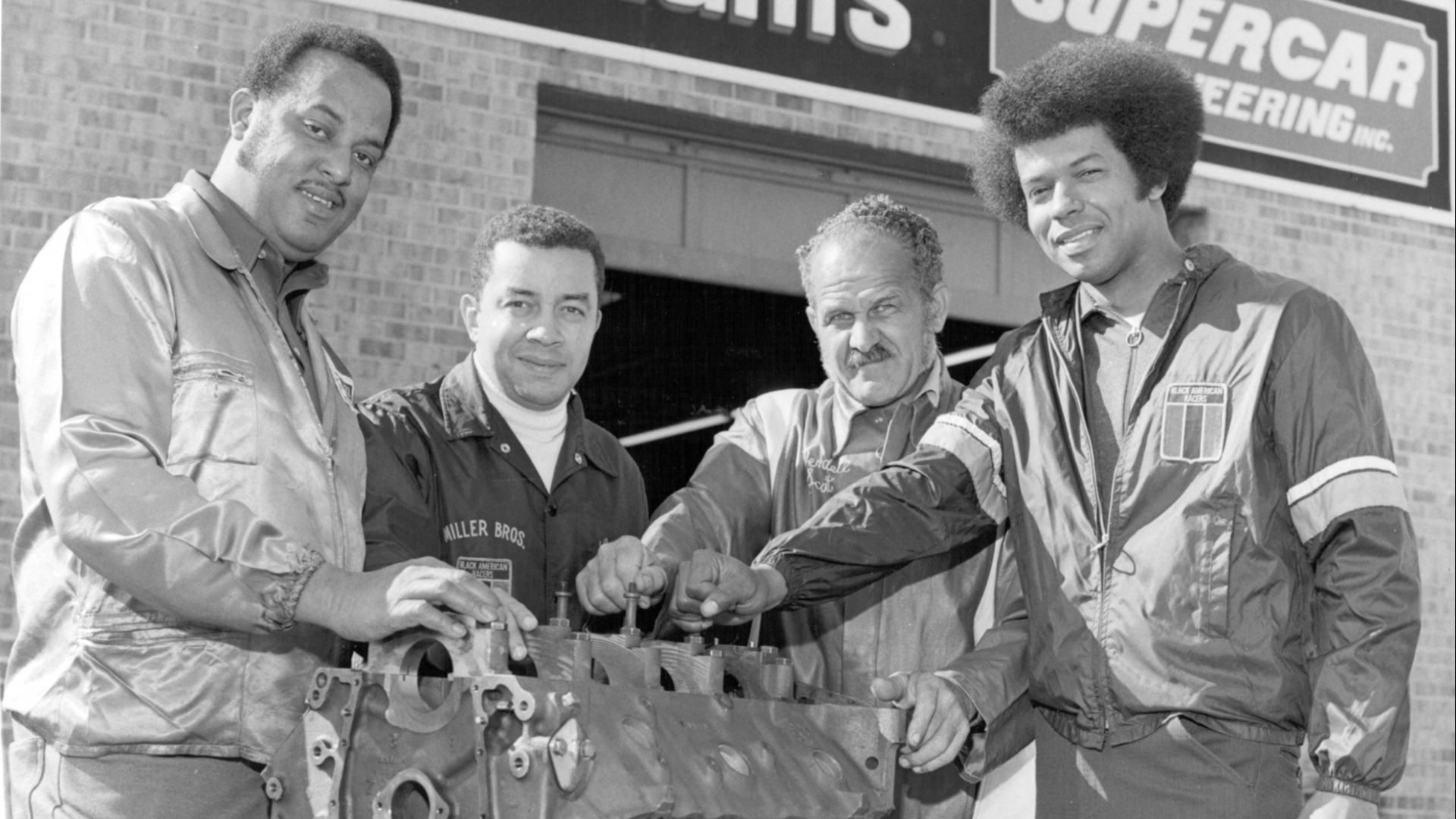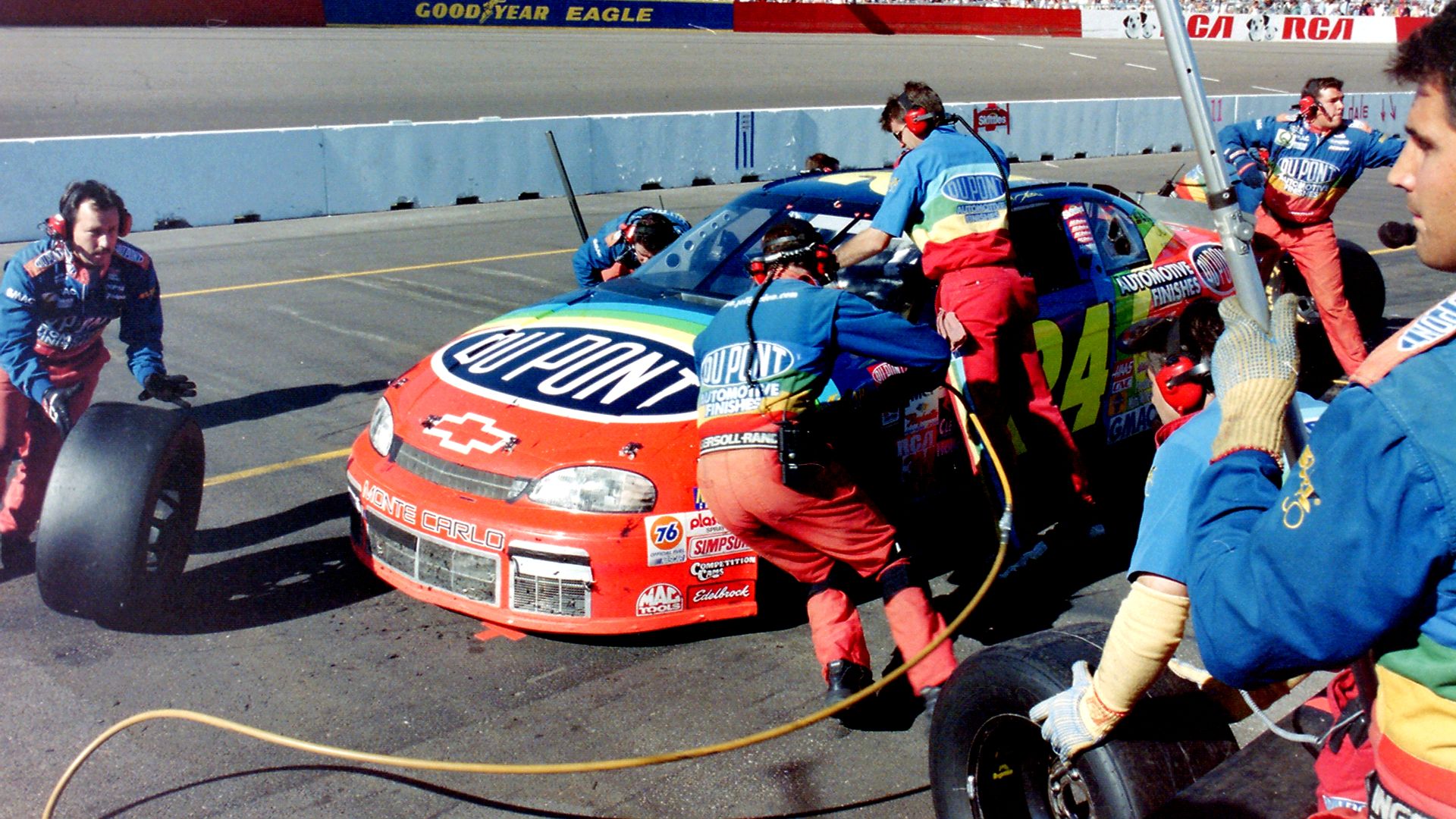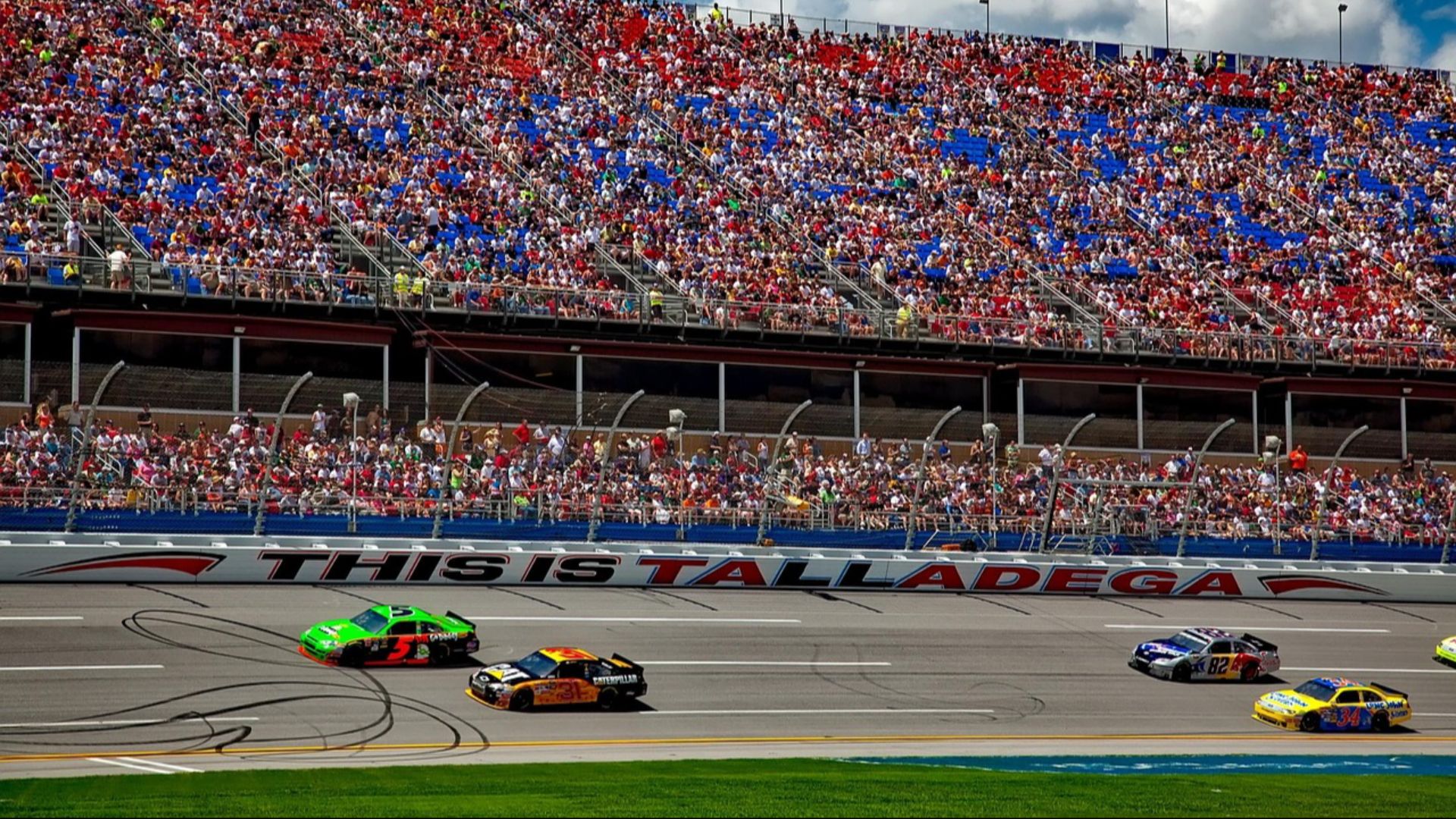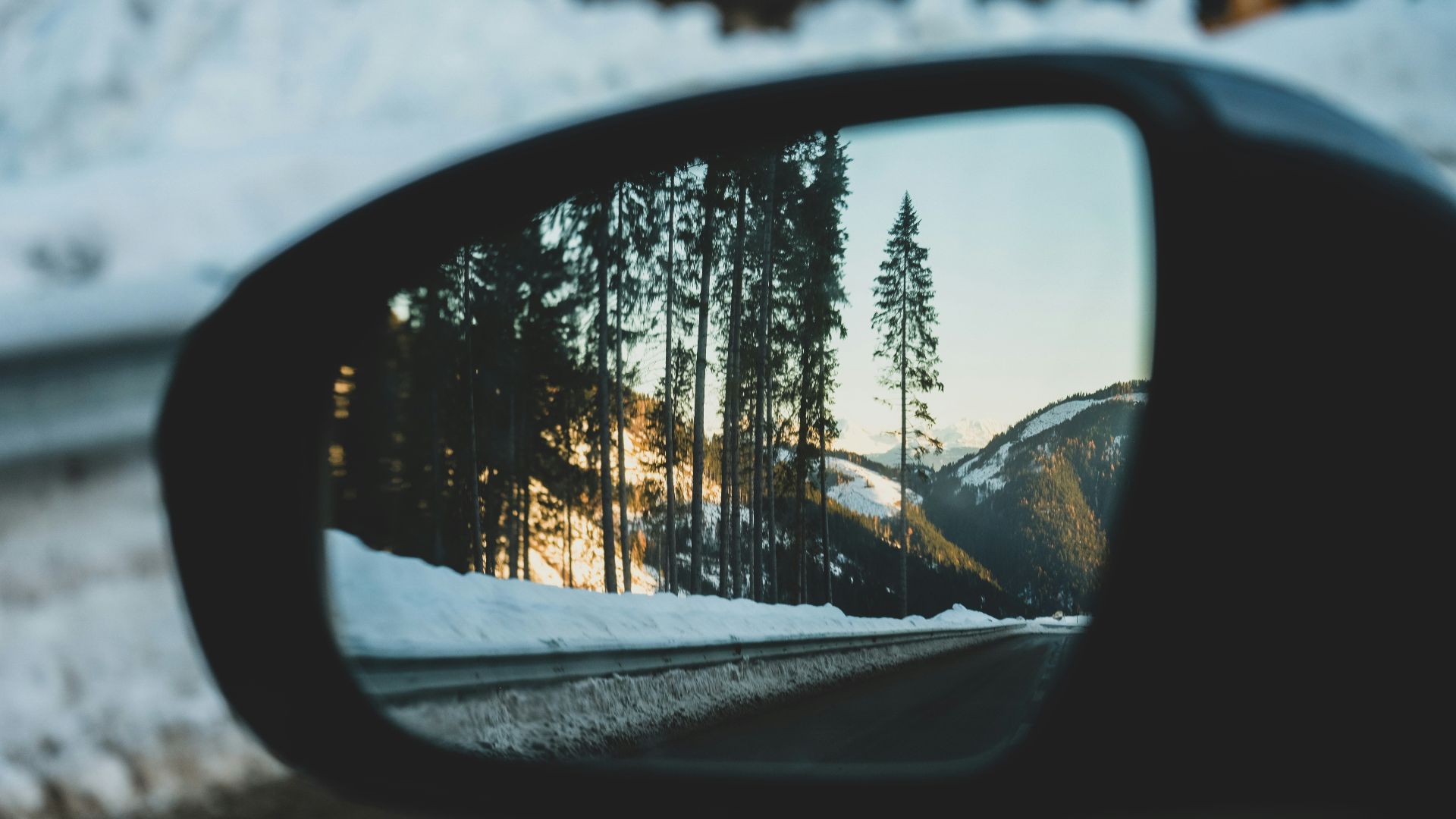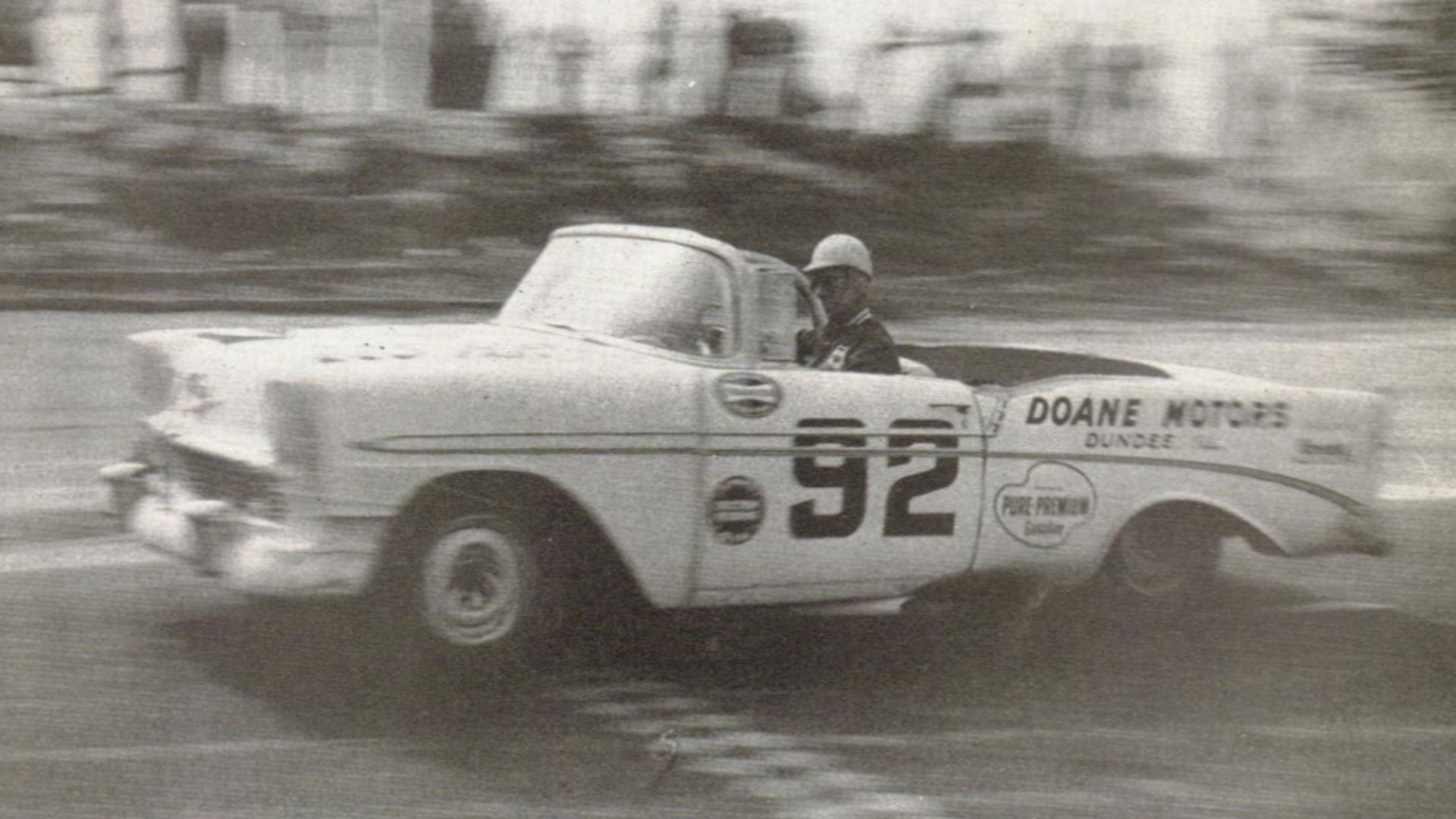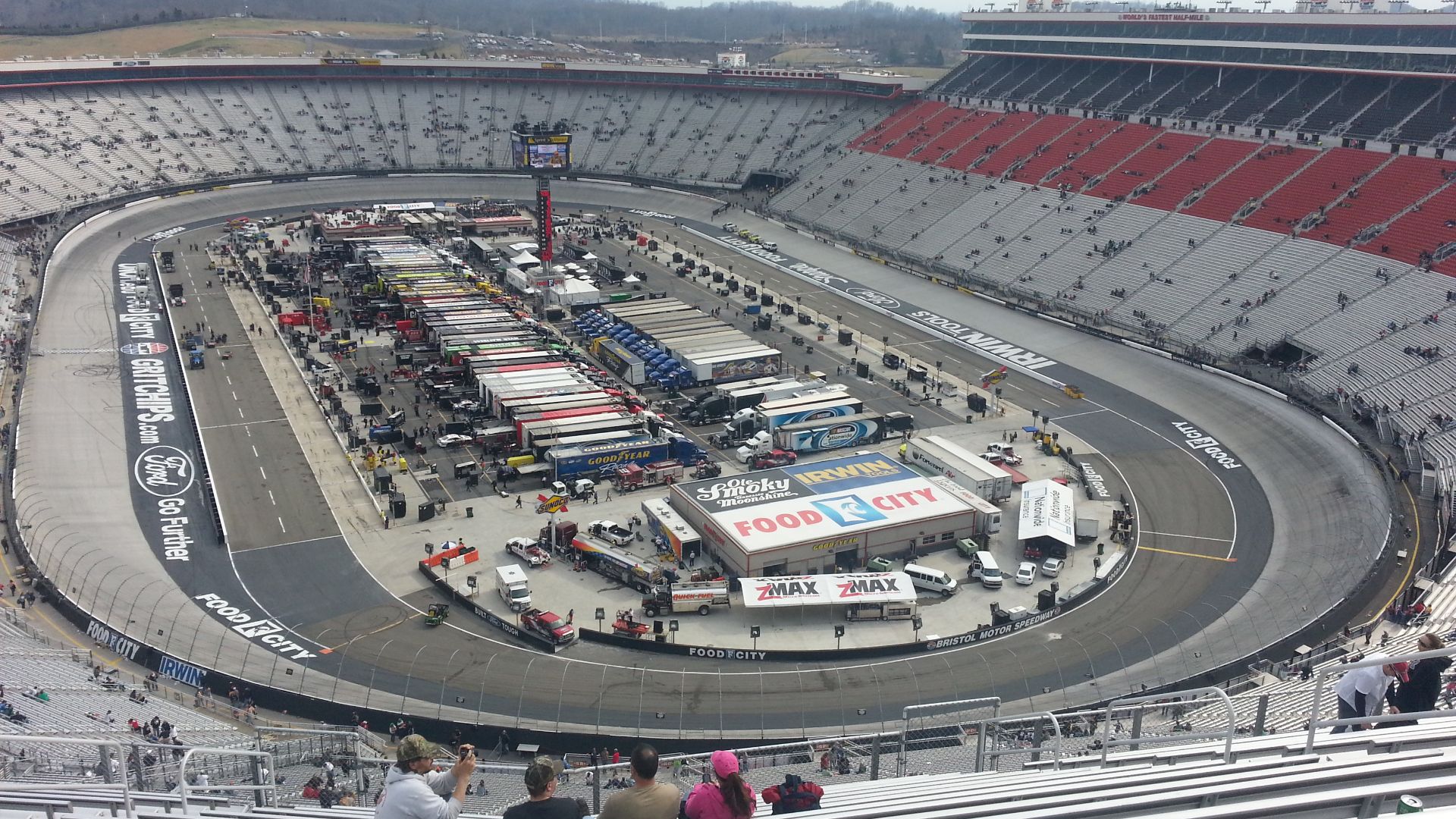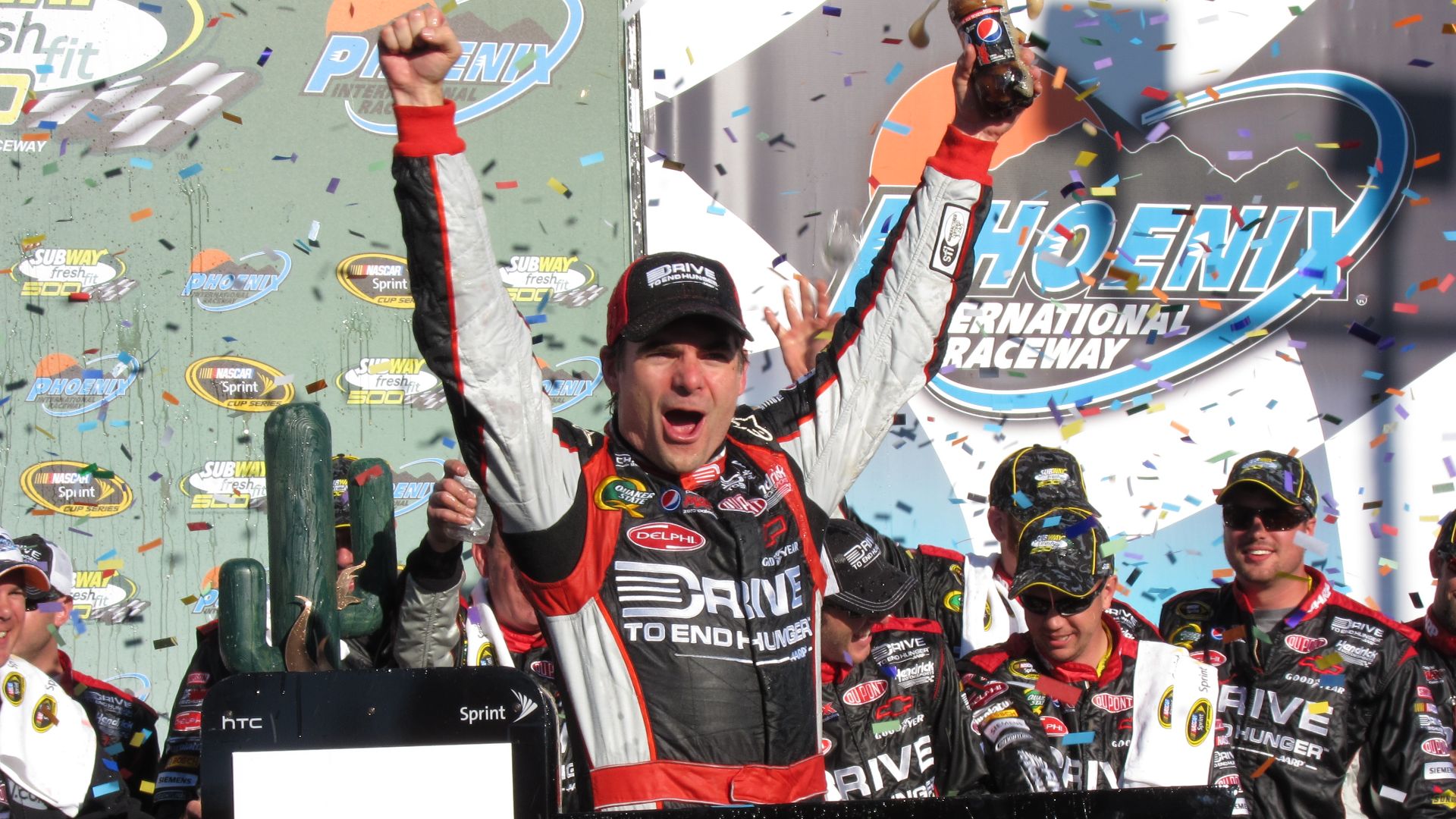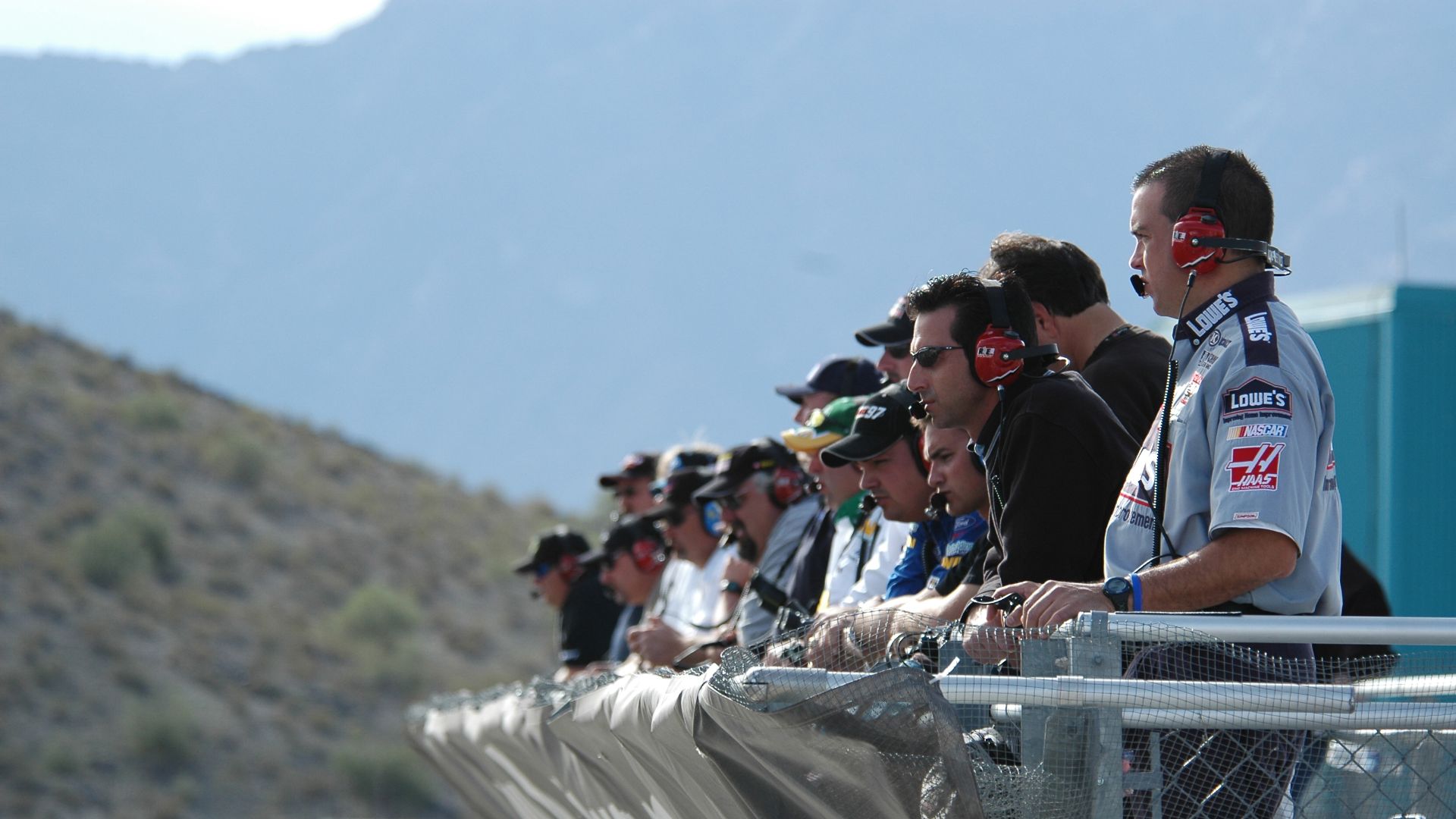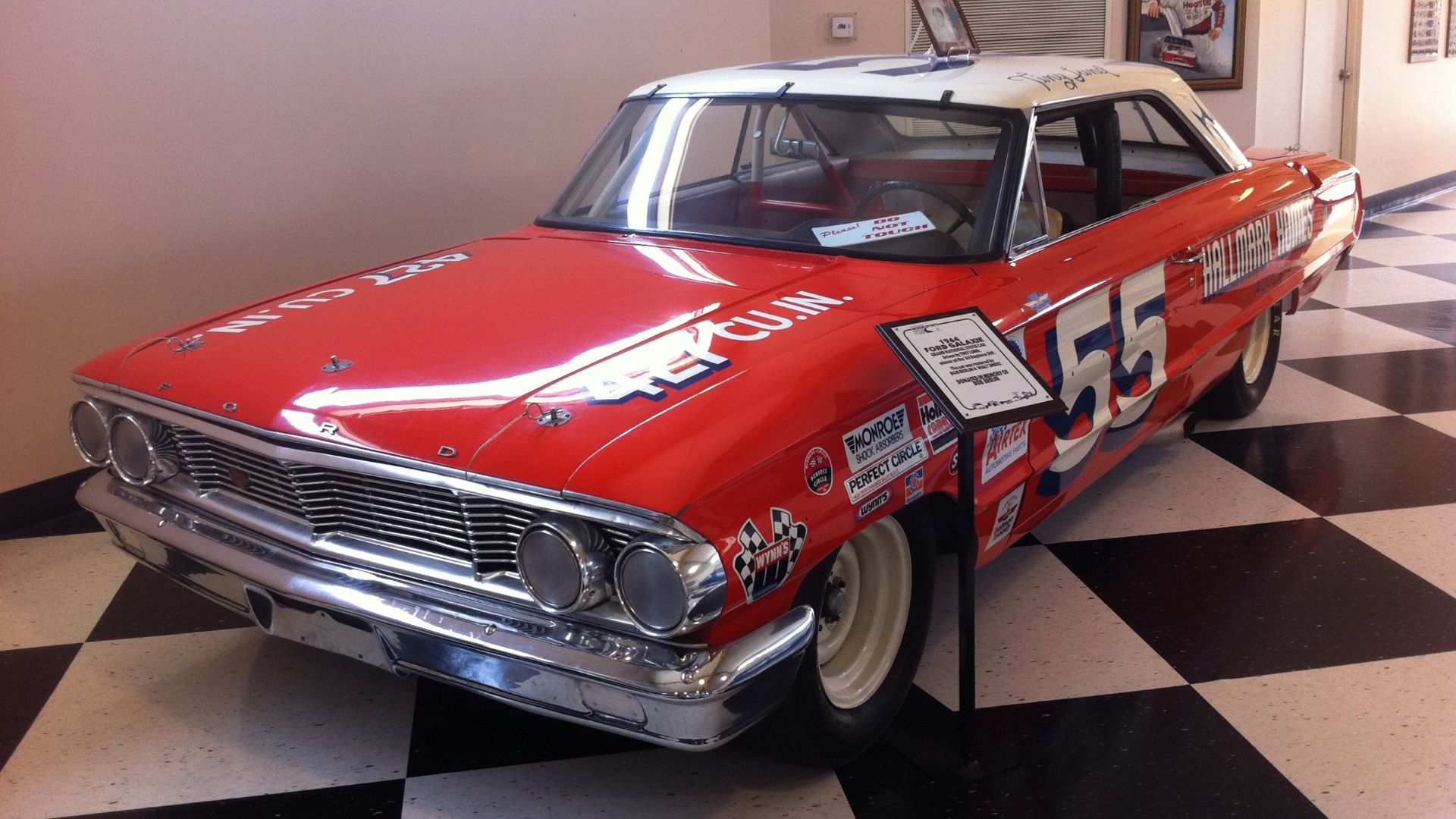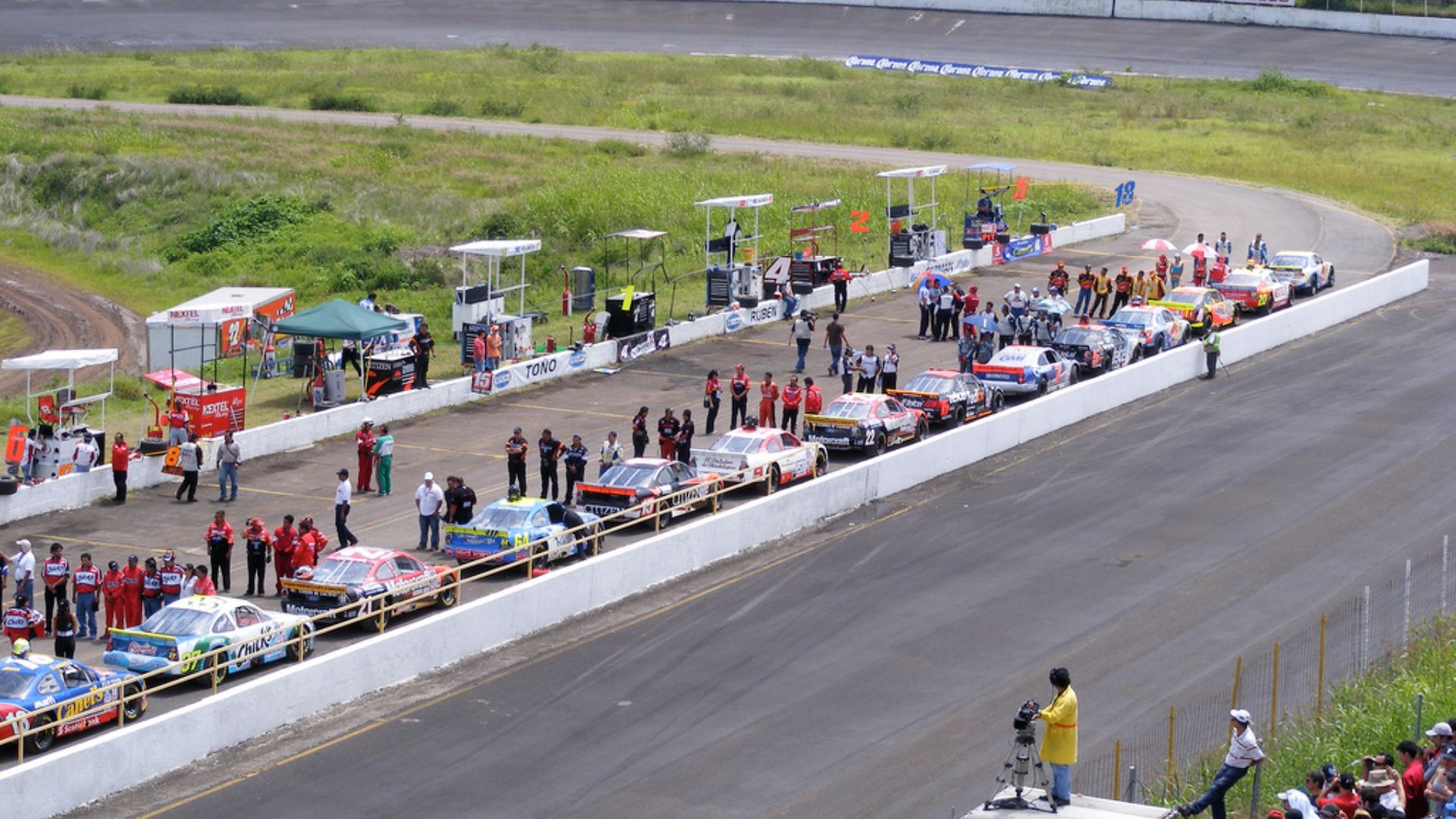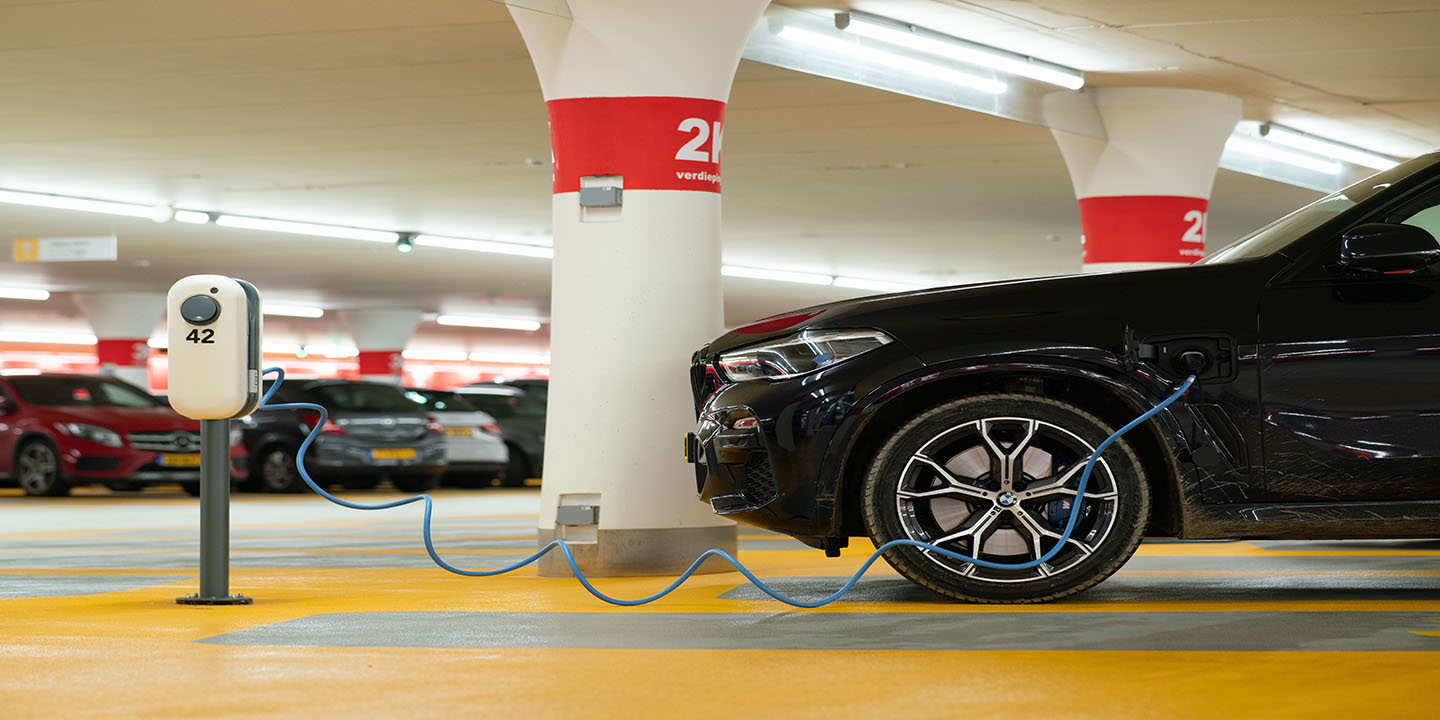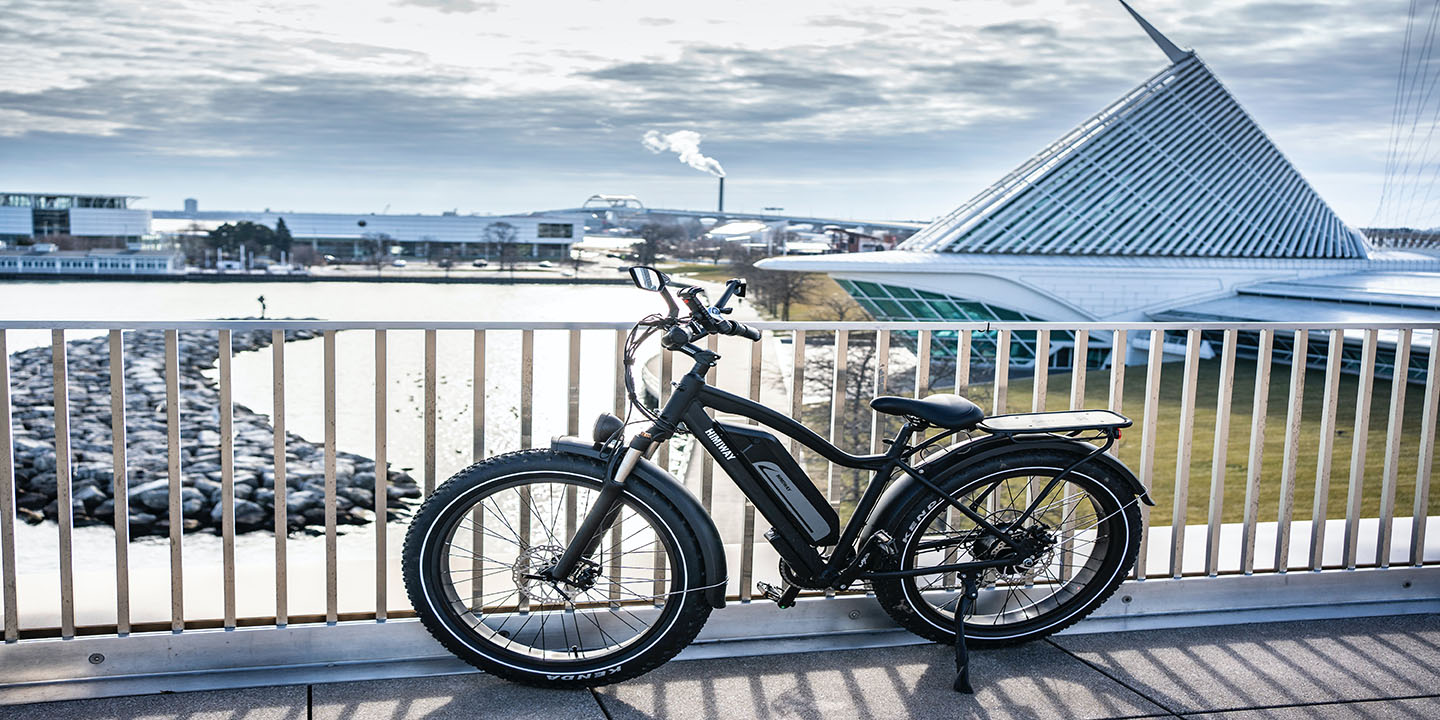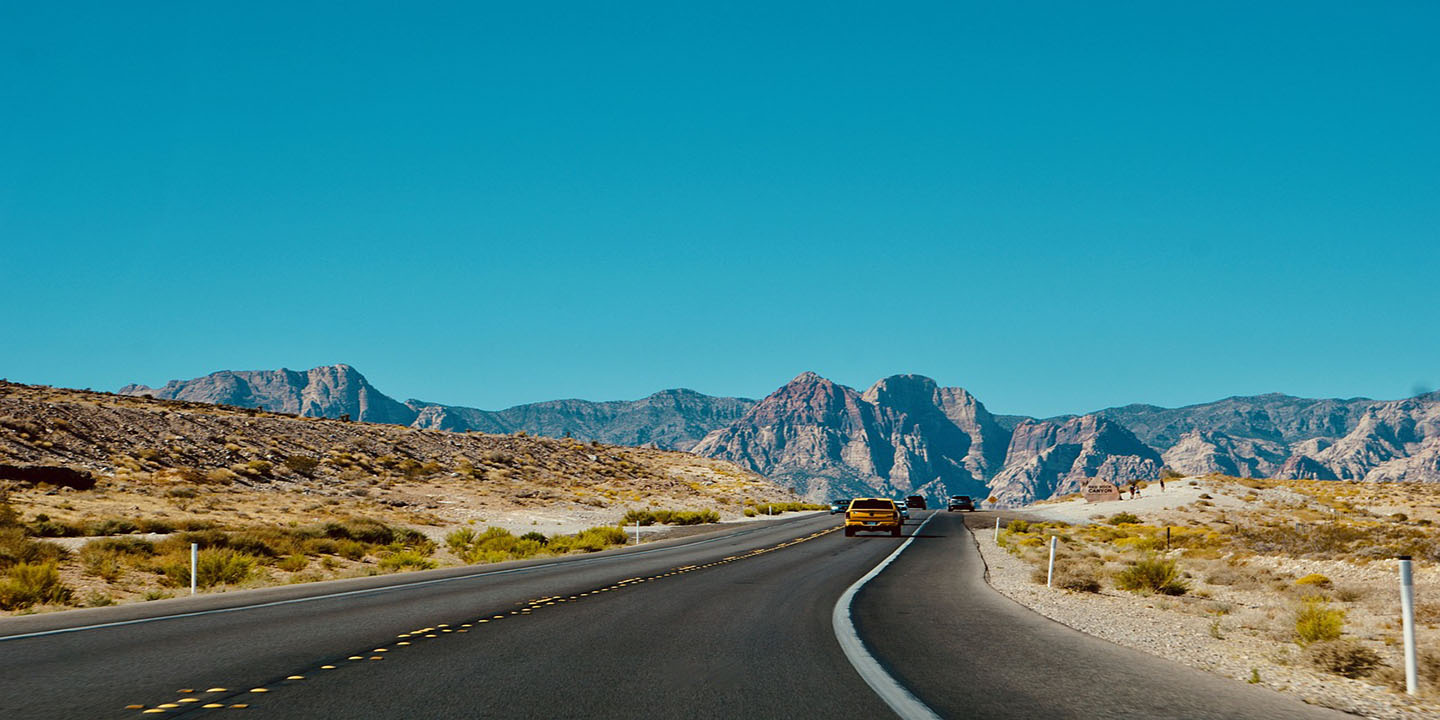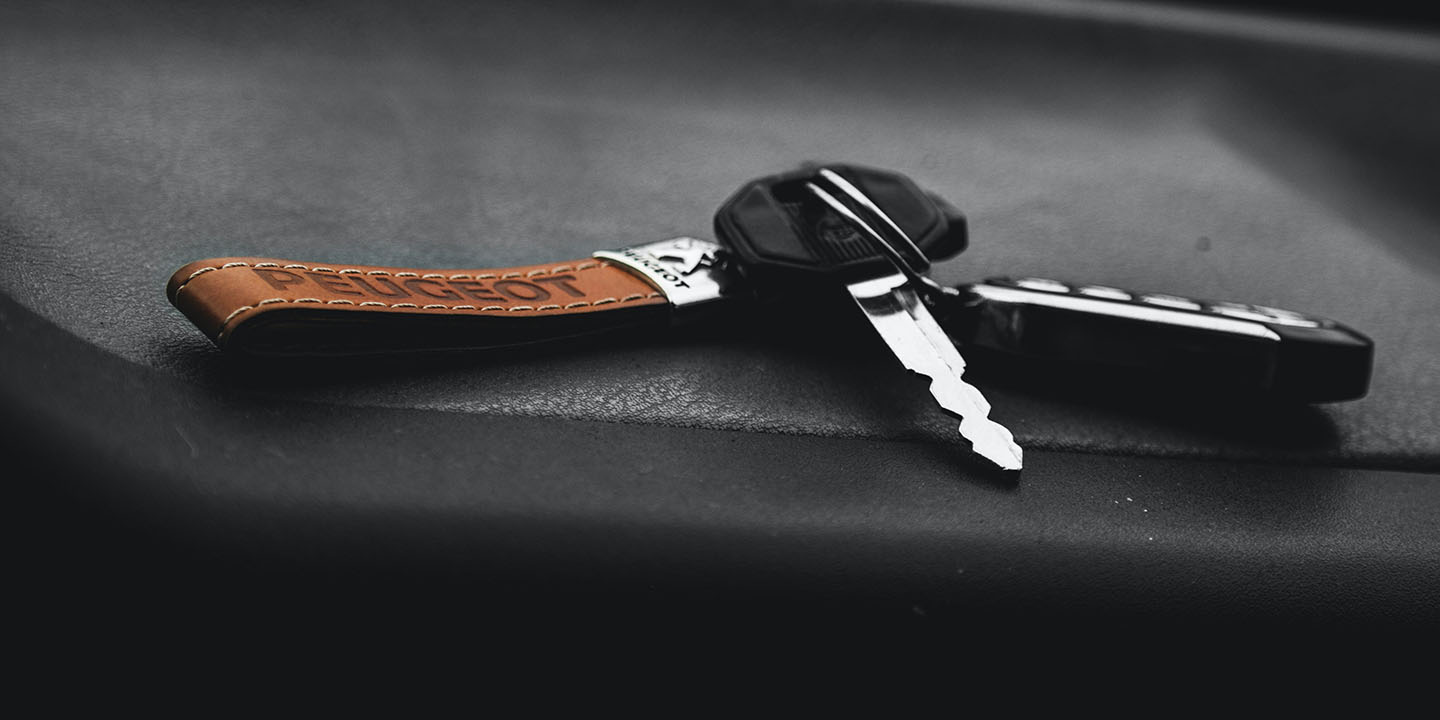Not Your Average Race Day Facts
Most people think they know NASCAR—roaring engines, massive tracks, lightning-fast cars, and iconic drivers. Sounds like you've got the gist of it, right? Wrong! Because there's a whole other side of NASCAR that usually doesn’t make the highlight reel. Let’s lift the hood and take a closer look at the parts of NASCAR that fly under the radar.
1. Moonshine Origins Behind The First Races
Initially, they weren't racing for trophies but running from the law. In the Appalachian hills, moonshiners souped up their cars to outrun revenue department officers. Those same daredevils eventually lined up on dirt tracks and created a sport rooted in rebellion and grit.
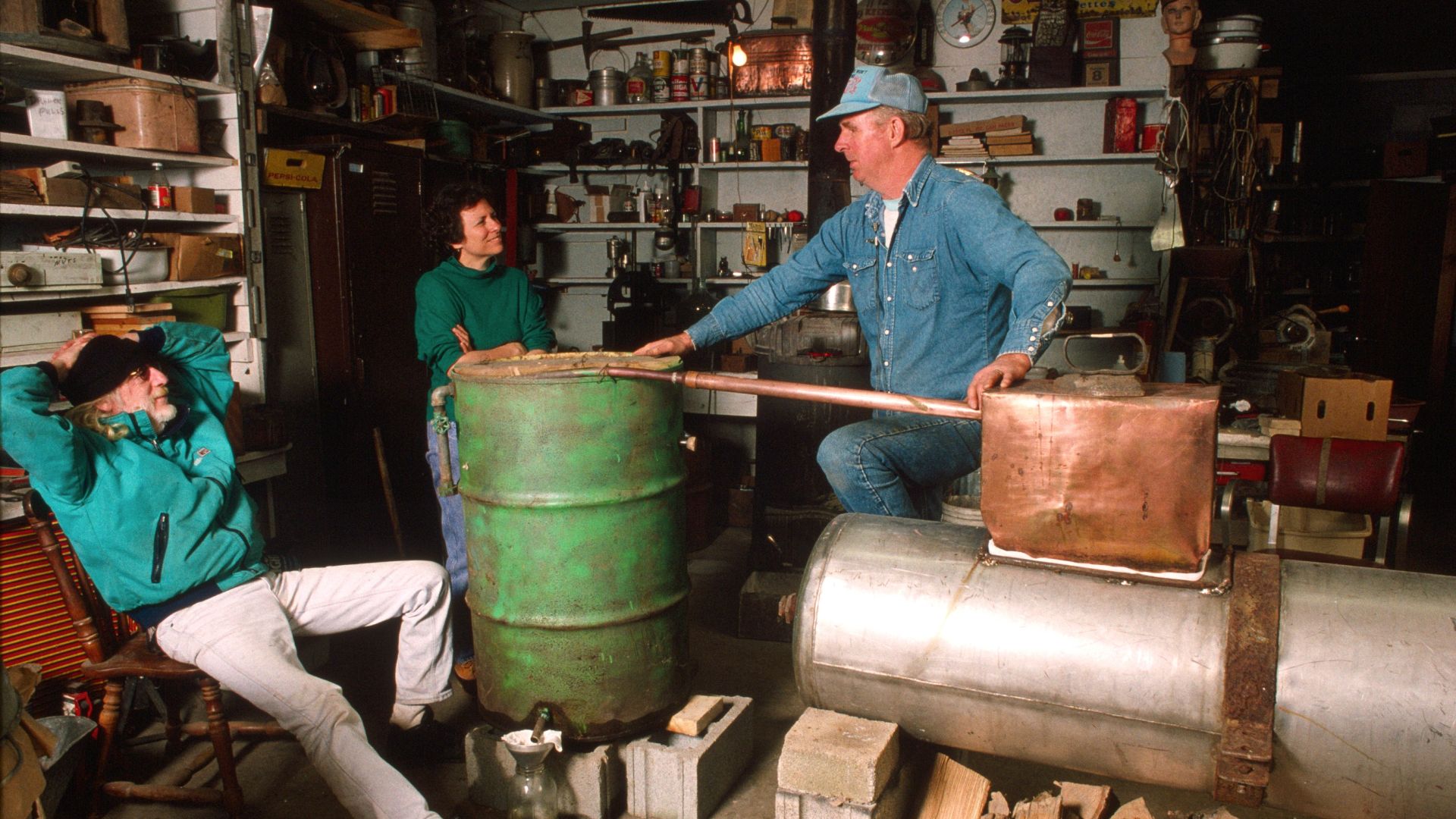 Lyntha Scott Eiler on Wikimedia
Lyntha Scott Eiler on Wikimedia
2. Daytona Beach Once Served As The Track
Before the speedway came along, drivers raced on the tide. Daytona's hard-packed sand was perfect for pushing limits, with one lane heading south on pavement and the return lane on the beach. That stretch of coast became a racing ground, and it was unforgettable.
3. NASCAR Engines Don't Use Speedometers
Imagine flying down a straightaway at 200 mph without a speedometer. That's every NASCAR driver's reality. Instead of watching speed, they monitor RPMs to shift and manage performance. In a sport where milliseconds count, they race by instinct and the raw feedback coming straight from the car.
4. Wendell Scott Broke Barriers In 1963
Wendell Scott, a Black mechanic from Virginia, made history when he won a Grand National race in 1963. Officials delayed announcing it, and no trophy was handed out that day. Still, he refused to give up and worked to carve out his rightful place in a segregated sport.
5. Pit Crews Train Like Professional Athletes
Have you ever tried changing four tires and refueling in 12 seconds? These crews are mechanics, sprinters, powerlifters, and tacticians rolled into one. Many teams recruit from college football programs. Every movement is choreographed. One stumble and a race might be lost.
6. The Talladega Curse Still Haunts Drivers
Some say it started with a burial ground, and others blame a string of freak accidents. Whatever you believe, Talladega has earned its haunted reputation. Drivers talk about inexplicable engine failures and crashes that defy logic. Superstition? Maybe. But that track gives people chills.
7. NASCAR Tires Are Handmade For Every Race
There's no one-size-fits-all here. Every Goodyear racing tire is crafted for a specific track and layout. They're built by hand, tested, and then shipped out like prized cargo. Even the rubber's composition changes. These tires aren’t just tough—they’re science in motion, engineered to endure.
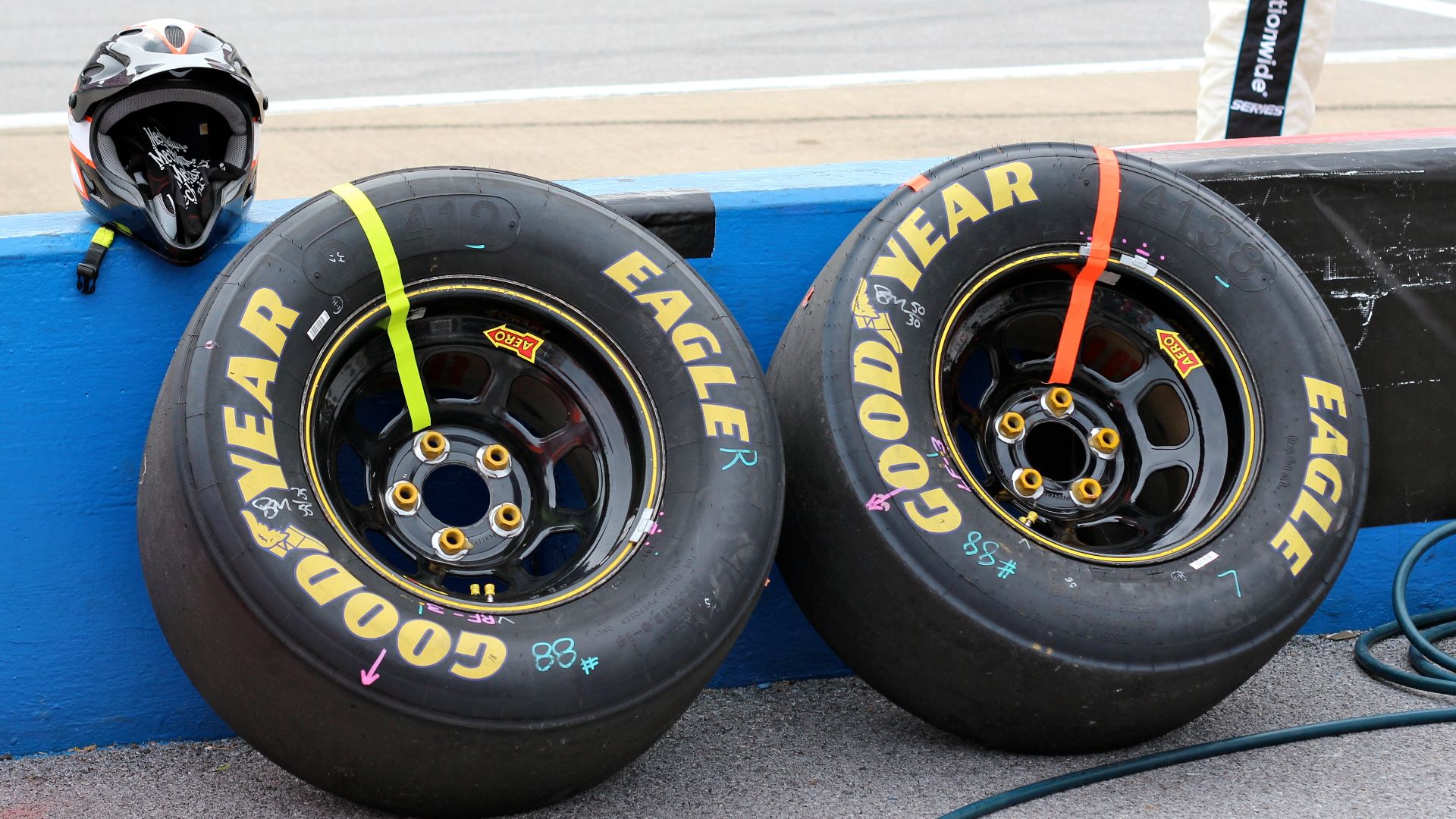 Broadbandito from Sammamish, USA on Wikimedia
Broadbandito from Sammamish, USA on Wikimedia
8. NASCAR Once Banned Rearview Mirrors
In 1970, NASCAR briefly outlawed rearview mirrors. Officials believed mirrors gave some drivers an unfair edge during tight battles. Instead, they leaned on spotters perched high above the track. The rule didn't last long, and in 1971, it was lifted.
9. Fuel Is Delivered By Gravity
There's no button-activated nozzle or electronic system here. During pit stops, fuel flows through tall red cans, relying solely on gravity to enter the tank. It's fast and leaves zero room for hesitation. One wrong angle or slip, and valuable seconds are lost.
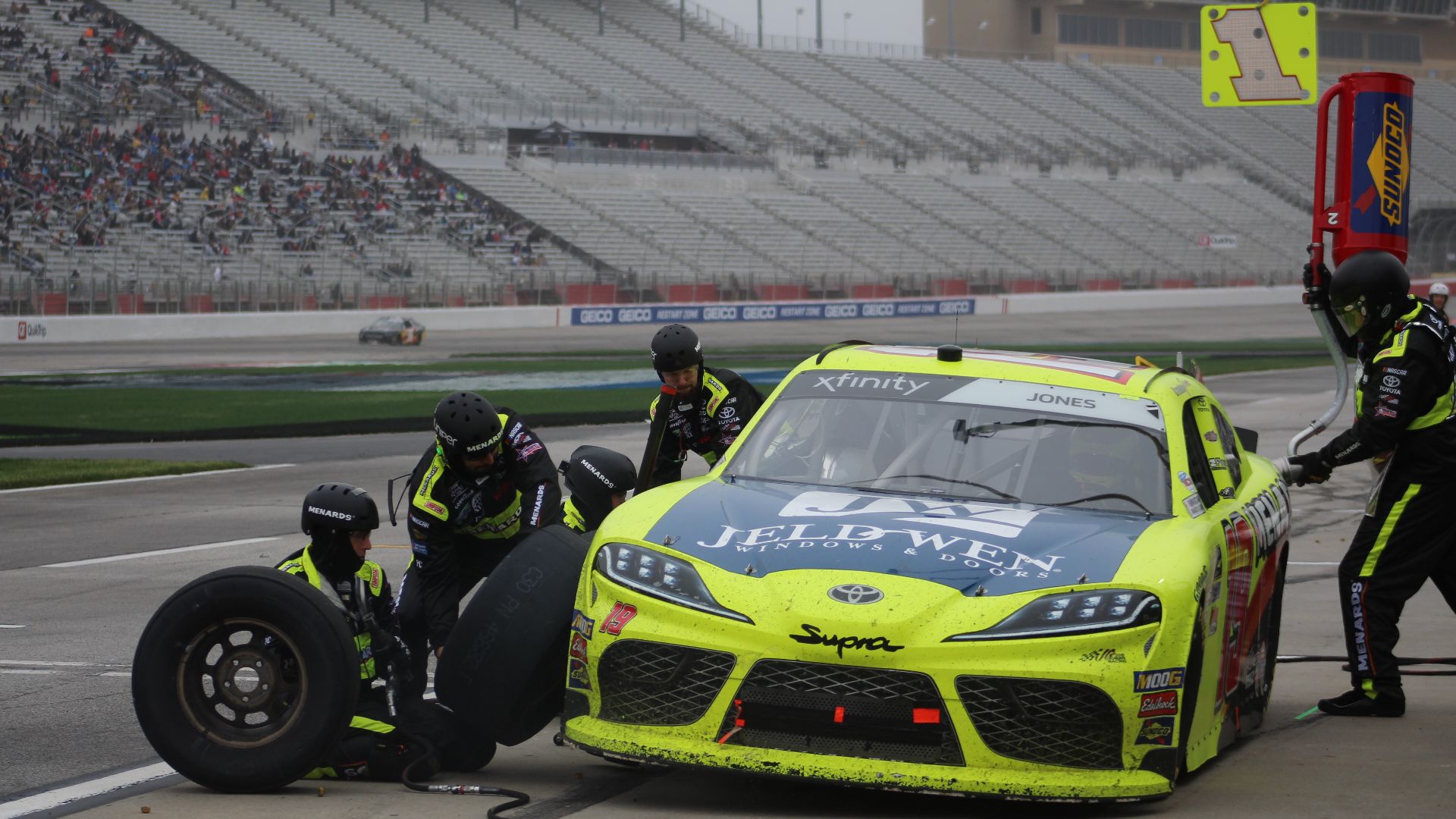 Zach Catanzareti Photo on Wikimedia
Zach Catanzareti Photo on Wikimedia
10. NASCAR Once Had A Convertible Division
Uncovered stock cars tearing around the oval was a real thing. NASCAR ran a Convertible Division from 1956 to 1959, with open-air bodies and wild wind resistance. Fans loved the novelty, but safety concerns and logistics were more important, so it was stopped.
11. The Track At Bristol Has Stadium-Level Noise
Bristol Motor Speedway funnels the roar of engines into a concrete bowl, reaching above 120 decibels, loud enough to rattle your ribcage. That's almost as loud as a military jet, which takes off at approximately 140 decibels. Some fans bring earplugs to minimize the sound.
12. Fireproof Undergarments Are Mandatory Gear
Underneath the flashy suits, survival starts with the stuff no one ever sees. Nearly everything, from socks and gloves to balaclavas and even underwear, is fire-resistant. After too many close calls in the past, NASCAR mandated that every layer be flameproof.
13. The Green Flag Is Not The Only Start Signal
You've seen the green flag wave, but did you catch the lights? NASCAR doesn't rely on the flag alone but also on timing lights and radio cues. Even track-specific procedures set things in motion. Missing a signal can mean penalties or, worse, crashes.
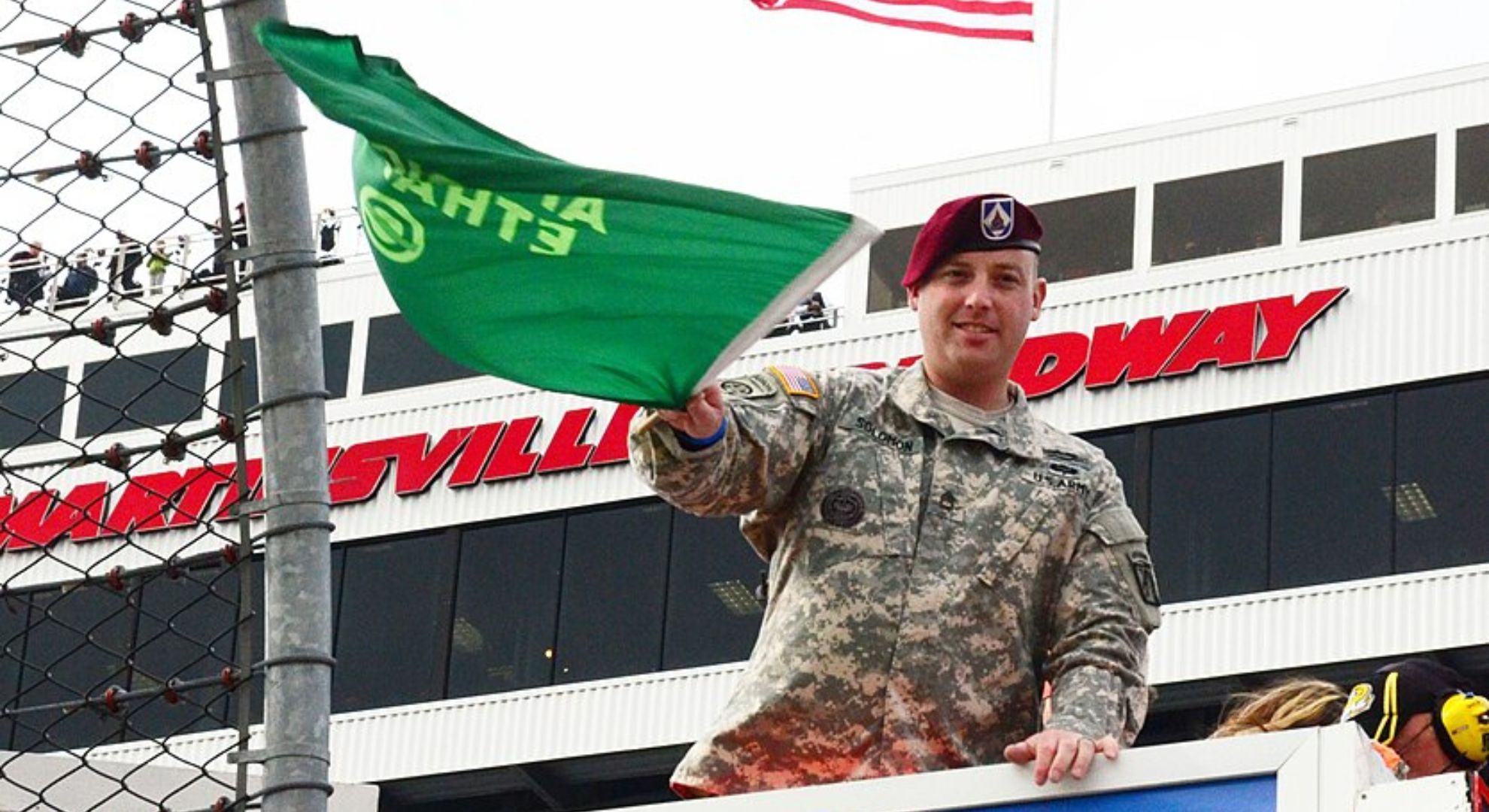 Sgt. Joshua Tucker on Wikimedia Commons
Sgt. Joshua Tucker on Wikimedia Commons
14. Some Tracks Use Jet Dryers From Airfields
After rain hits a track, drying it isn't a simple task. Enter the Air Titan system, modified jet turbine blowers originally built for airport runways. These roaring machines sweep water away in minutes. It's loud and, for some, oddly satisfying to watch.
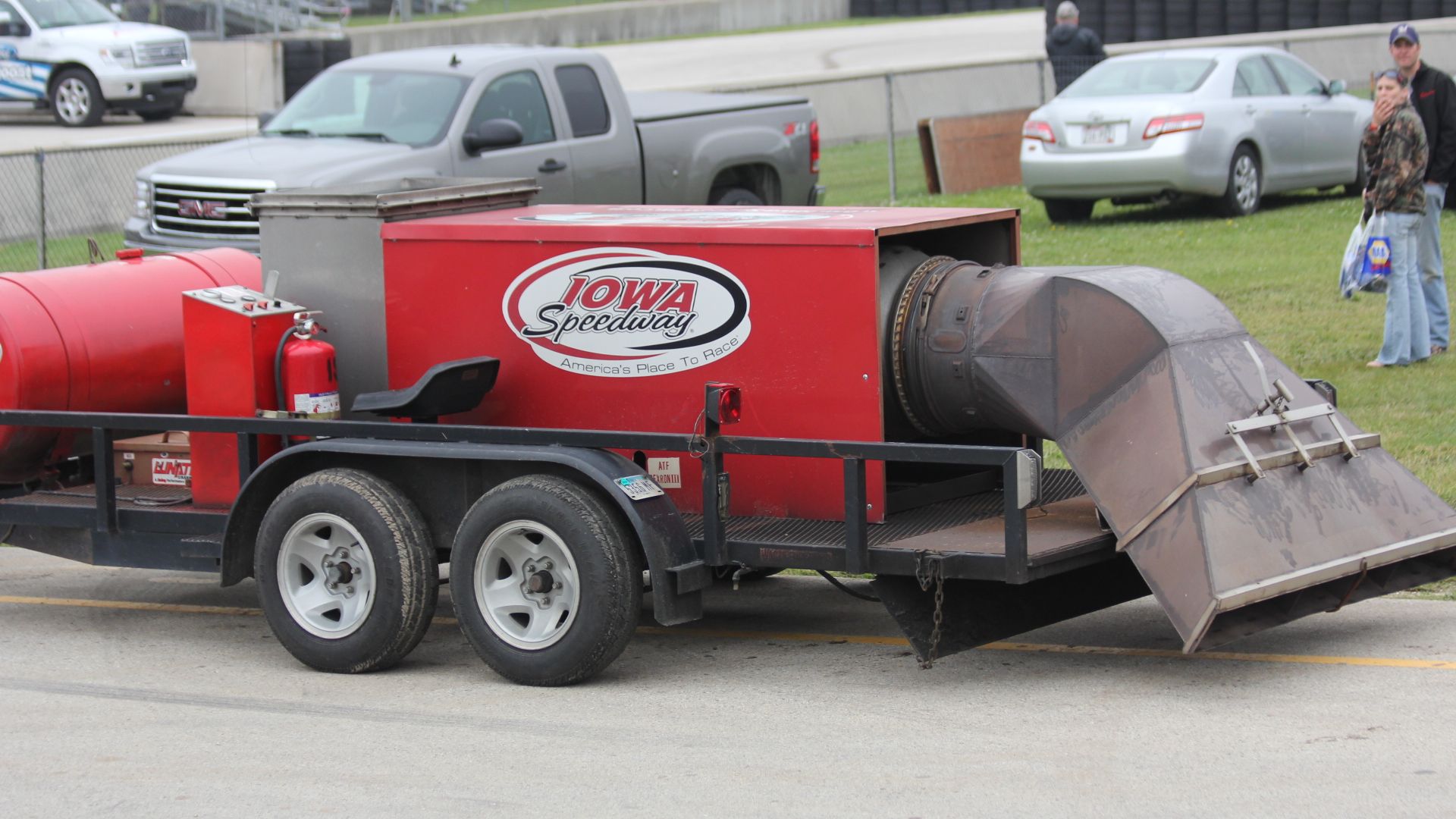 I, the copyright holder of this work, hereby publish it under the following license: on Wikimedia
I, the copyright holder of this work, hereby publish it under the following license: on Wikimedia
15. NASCAR Drivers Sometimes Relieve Themselves During Races
With races lasting over 500 miles and no scheduled bathroom breaks, drivers often face physical challenges. Staying hydrated is crucial for safety and performance, which can occasionally lead to situations where drivers have to relieve themselves in their suits. It's a practical reality of endurance racing.
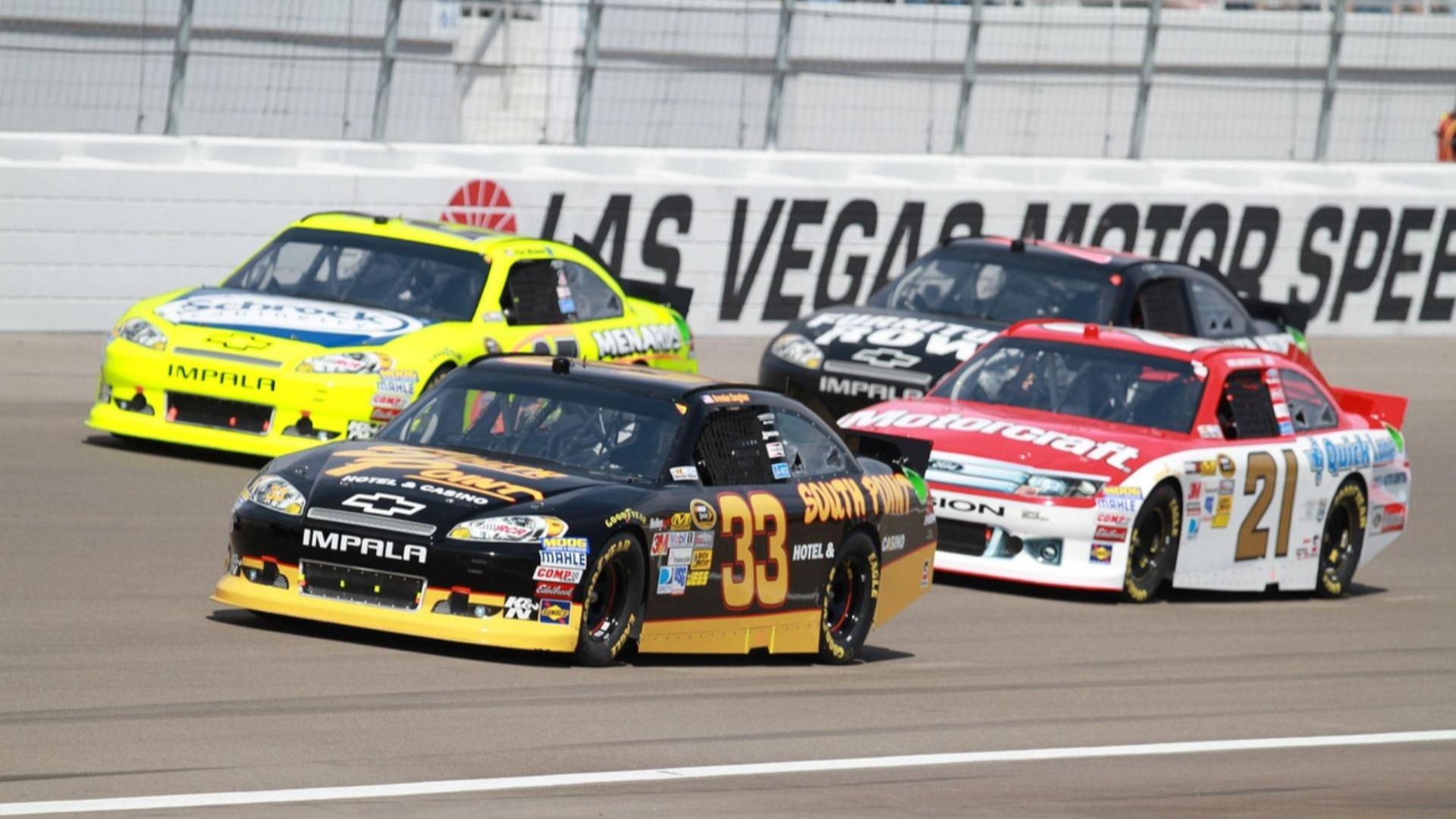 PublicDomainPictures on Pixabay
PublicDomainPictures on Pixabay
16. Drivers Can Lose Up To Ten Pounds Per Race
Inside the car, temperatures spike past 120°F. Add a fire suit, nerves, and two to four hours of concentration, and you've got serious weight loss. It's a sweaty, exhausting battle of endurance that pushes every physical limit the body has.
17. NASCAR Uses Spotters To Direct Drivers
High above the track, spotters become lifelines. Drivers can't see everything—blind spots and chaos are everywhere. Spotters give constant updates to direct them through traffic and point out threats. At 200 mph, one missed word is all it takes to end a race.
18. Stock Cars Have No Headlight Glass
In NASCAR, there's no need for actual lights since races are on lit tracks. Still, teams place decals where the headlights would be for branding or tradition. Up close, it looks kind of funny. But from the stands, it looks legit.
19. NASCAR Has Raced In Japan And Mexico
You'd think it never left the U.S., but NASCAR's been abroad. In the late '90s, it held exhibition races in Japan, even running at Suzuka Circuit. Mexico has hosted races, too. The fans were curious, and the sport proved it could travel.
20. NASCAR Uses Black Boxes To Record Every Crash
Hidden inside each car is a crash data recorder, just like on airplanes. It captures impact force, speed, throttle position, and more. Engineers and safety crews study every detail. These little boxes have shaped the way NASCAR protects its drivers today.
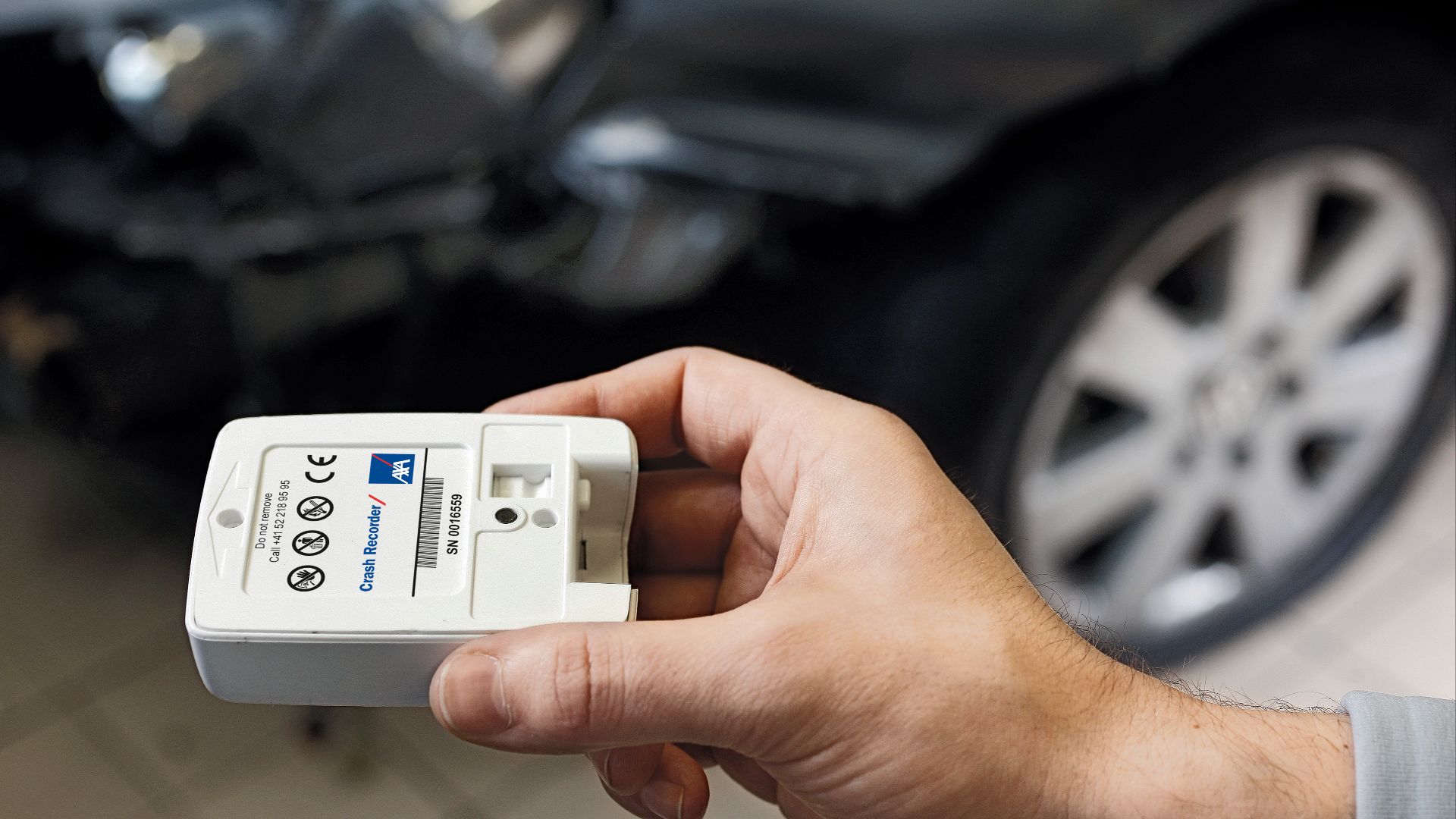 The original uploader was AXAWinterthur at German Wikipedia. on Wikimedia
The original uploader was AXAWinterthur at German Wikipedia. on Wikimedia


